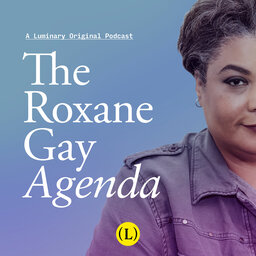The Market Is Fickle (w/ Barbara Kruger)
Roxane on the pleasures and perils of collecting art, and a conversation with one of the artists whose work she collects. Barbara Kruger came up through the magazine industry, where she applied her editorial design skills in the making of provocative, conceptual images, films and sculptures. She talks about her belated success, and how there’s not just one art world anymore.
Mentions:
● Barbara Krugers LACHMA exhibit https://www.lacma.org/art/exhibition/barbara-kruger
Credits: Curtis Fox is the producer. Our researcher is Yessenia Moreno. Production help from Kaitlyn Adams and Meg Pillow. Theme music by Taka Yasuzawa and Alex Sugiura.
 The Roxane Gay Agenda
The Roxane Gay Agenda

